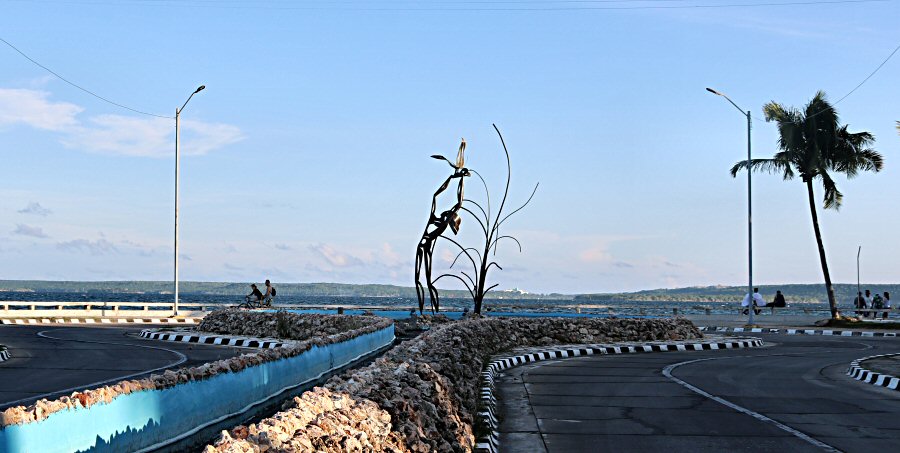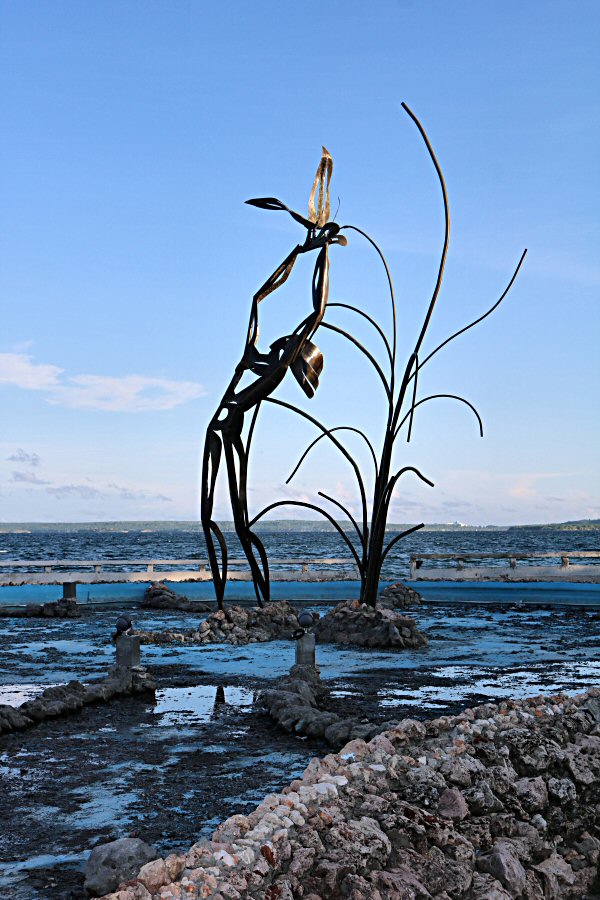

Inaugurated on July 10, 1988, the 5.30
meters high metal statue is located on a pond with a
diameter of 15 meters. It is formed by combining
brass-bronze plates and tubes. Water is gushing from four
jets from the güira (commonly known as calabash tree) placed
in the hand of the statue. They represent the four rivers
flowing into the bay of Cienfuegos.
This artwork by the famous Cuban
sculptor Rita Longa is based on the legend of a beautiful
indigenous woman who lived in the Jagua region (today's
Cienfuegos). The beautiful Guanaroca lagoon that has a sad
but interesting legend about its emergence, is within the
the Bay of Jagua. The India of Guanaroca is the best-known
aboriginal legend of the seven compiled by Pedro Modesto
Hernández y Hernández about the history of the former colony
Fernandina de Jagua.
Acording to the legend, the sun,
called Huion, created the first man on earth to have someone
to worship him, and named him Hamao. Soon the sensitive
moon, called Maroya, realized that Hamao was very lonely and
created the first woman to accompany him, calling her as
Guanaroca.
Hamao and Guanaroca fell in love with
each other frantically, and from this pure love their first
child, Imao, was born. Naturally, Guanaroca as a mother, put
all her love and attention into raising her son. This
provoked the jealousy of Hamao, who felt alienated and
couldn’t accept to share his love for Guanaroca with the
baby. Even though the baby was the fruit of his pure love,
over time he became stuck in the criminal idea of getting
rid of the child.
One night, while Guanaroca was
sleeping, Hamao secretly took the tender boy to the
mountains and left him there. The baby died in a short time
due to hunger, thirst, and the burning effect of the sun.
Waking up from sleep, Guanaroca noticed the absence of her
son and desperately searched for him. Soon, she understood
her loss, when she heard the squawk of a bird that announced
such sad news. Meanwhile, to hide his guilt, Hamao found a
large güira, hollowed it out and hided the baby's lifeless
body inside. While Guanaroca was searching for her son, a
güira hanging from the tree, caught her attention. When she
took it into her hands, she observed that it was pierced.
When she looked inside, with horror she saw the corpse of
her adored son inside, so that she felt faint and the güira
escaped from her hands. When it broke, fish, turtles of
different sizes and a large amount of fluid came out,
scattering all down the hill. This grief over the loss of
her son caused the helpless mother to cry incessantly. While
abundant brackish tears gradually increased, a lagoon formed
what is known today as the Guanaroca lagoon.
